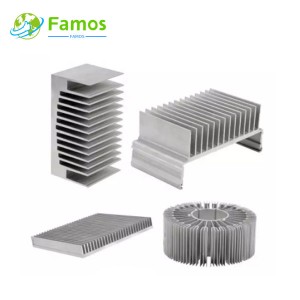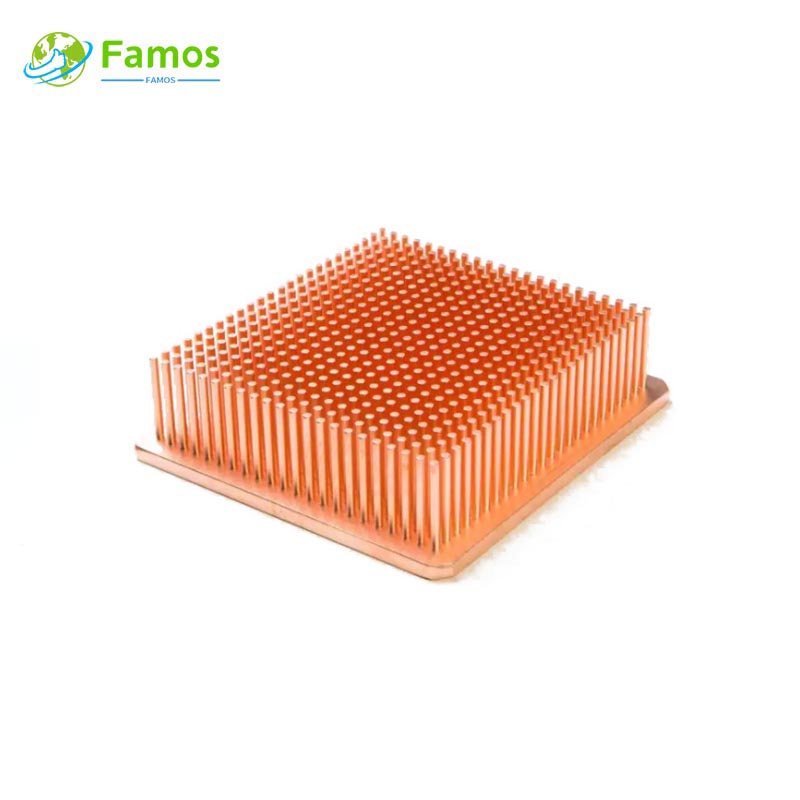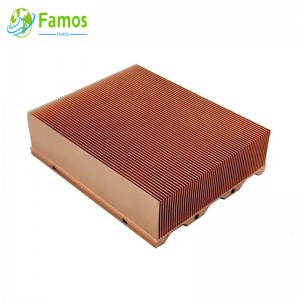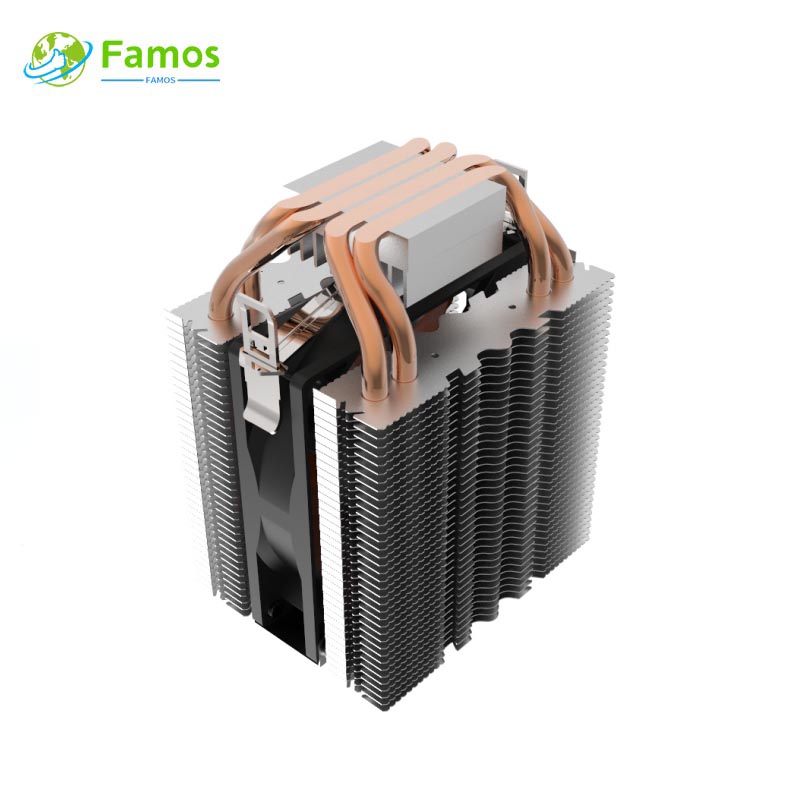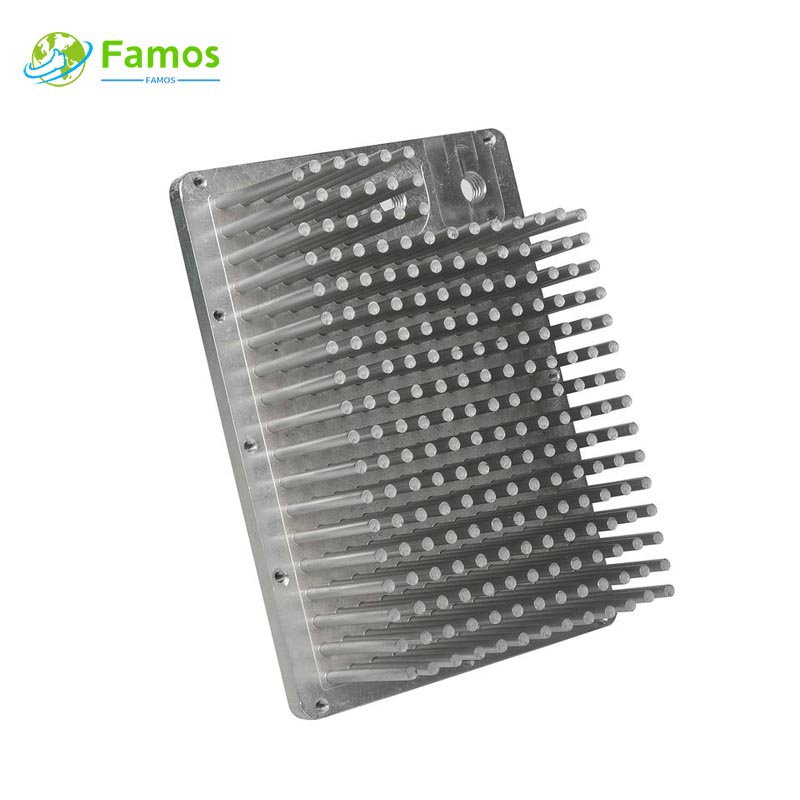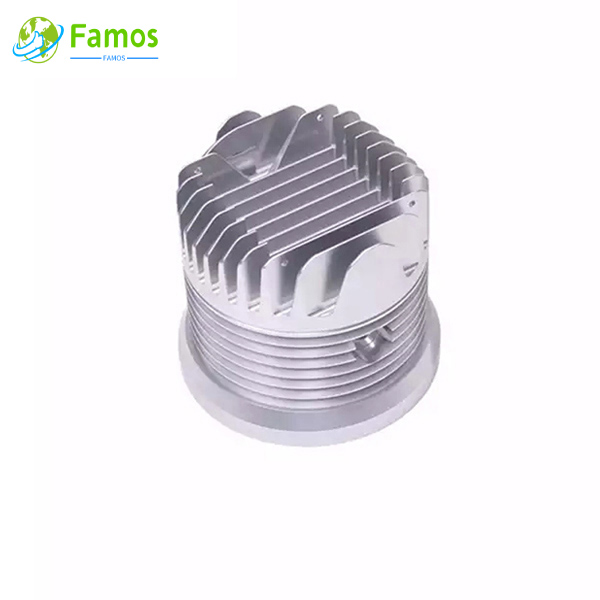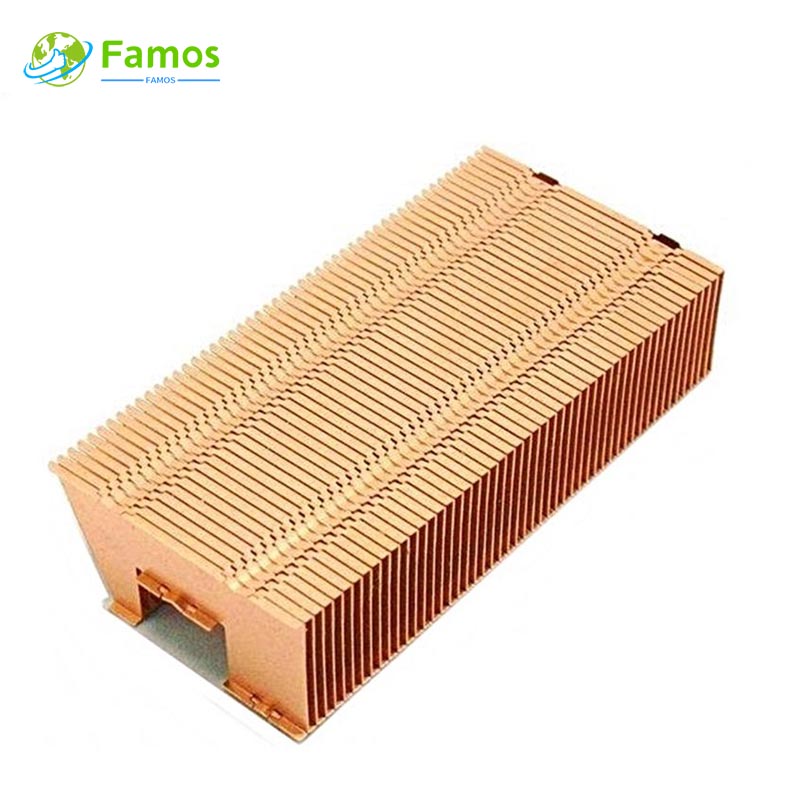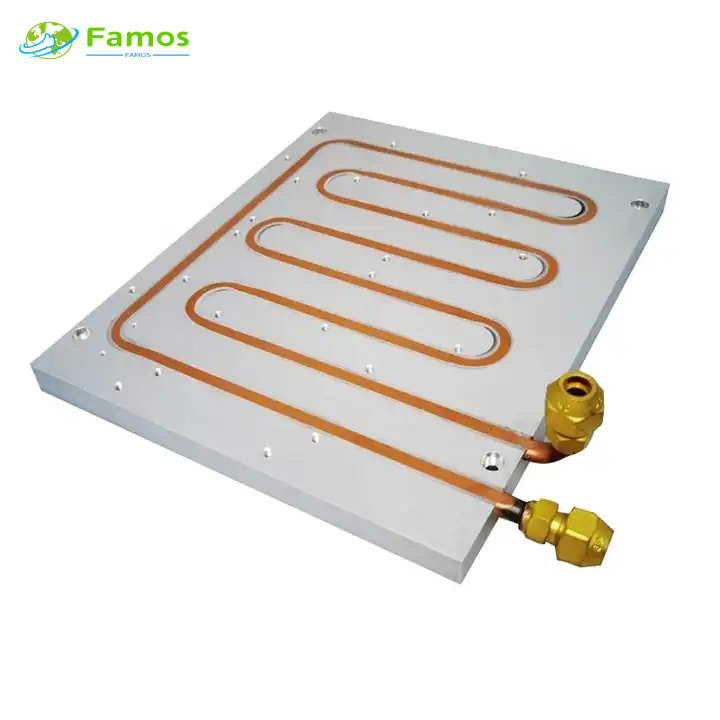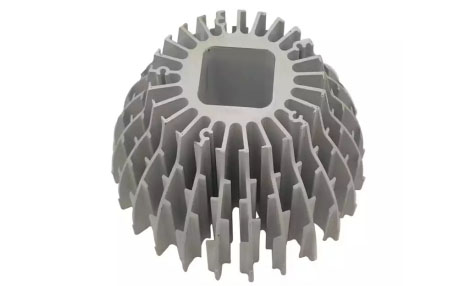
The importance of LED heat sink
LED heat sink is a metal plate used for heat dissipation, usually installed at the bottom of an LED lamp. It can effectively disperse and dissipate the heat generated by the LED, maintain the temperature of the LED within a safe range, and ensure the normal operation and service life of the LED lamp.
The brightness and lifespan of LED lights largely depend on the control of LED temperature. High temperatures can reduce the brightness and lifespan of LED lights, and even lead to their failure. Therefore, LED heat sink is crucial for the performance and reliability of LED lights
Main manufacturing process of LED heat sink
Here are several commonly used manufacturing processes for LED heat sinks:
1. Extruded heat sink
Extruded heat sink is manufactured by pushing hot aluminum billets through a steel die of the desired cross section ,then cut or saw it to the requested length heat sink. This extrusion process allows for complex fin designs to be created.
2. Cold forging heat sink
Cold forging heat sink is manufactured by cold forging process, the pin fin arrays are formed by forcing aluminum or copper raw material into molding die by a punch at usual temperature, let pins extend from the base area
3. Die casting heat sink
Die casting is the manufacturing process of injecting liquid molten metal under high pressure into a high precision mold. It is often used to mass produce complex three-dimensional structures with a detailed surface texture
Which manufacturing process is best for LED heat sink ?
If LED heat sink with the same appearance, the prices of die-casting molds are high, cold forging molds are moderate, and the prices of extrusion molds are relatively low.
From the perspective of processing costs, the price of extrusion profile machining is high, the price of die-casting is moderate, and the price of forging and pressing is relatively cheap.
From the perspective of material costs ,the material cost is relatively cheap for ADC12 die-casting, while A6063 is more expensive for extrusion and forging materials.
Take the LED heat sinks usually in the shape of sunflowers as an example.
if extrusion process, the material often use A6063, the advantage is that the heat dissipation effect of the product is relatively good, and the surface treatment of the finished product, such as anodizing, is relatively easy. The mold production cycle is short usually 10-15 days, and the mold price is cheap.
The disadvantage is that the post machining cost is higher and the output is lower.
Using die-casting to produce LED radiators, ADC12 material is often used as the material.
The advantages are: low processing cost, high production capacity, and the ability to produce various shapes of radiators if the mold allows.
Disadvantages: The mold cost is high, and the mold production cycle is long, usually taking 20-35 days.
The LED heat sink made of cold forging can theoretically be made of any material.
The advantages are: low processing cost and high production capacity. The mold production cycle is usually 10-15 days, and the mold price is cheap.
The disadvantage is that due to the limitations of the forging process, it is not possible to produce products with complex shapes
To sum up, if the LED heat sink has complex appearance and large quantity, it is recommended to use die-casting process, if the LED heat sink has simple appearance and large quantity, it is recommended to use cold forging process,
Otherwise ,we often use extruded process to do. At the same time, we need to analyze the specific situation and choose the most suitable manufacturing method for cost and product performance
Types of Heat Sink
In order to meet different heat dissipation requirements, our factory can produce different type heat sinks with many different process, such as below:
Post time: Apr-21-2023

